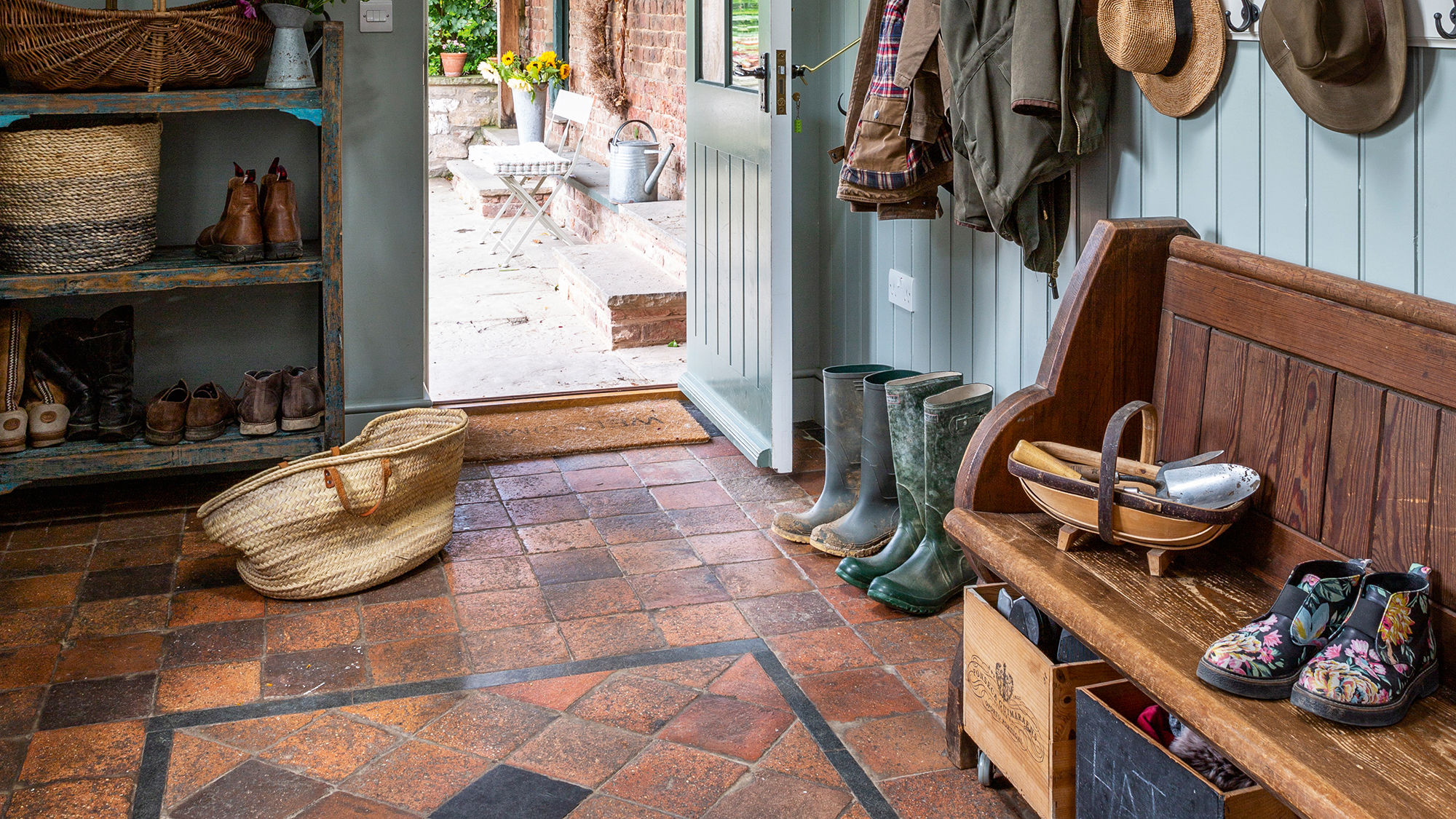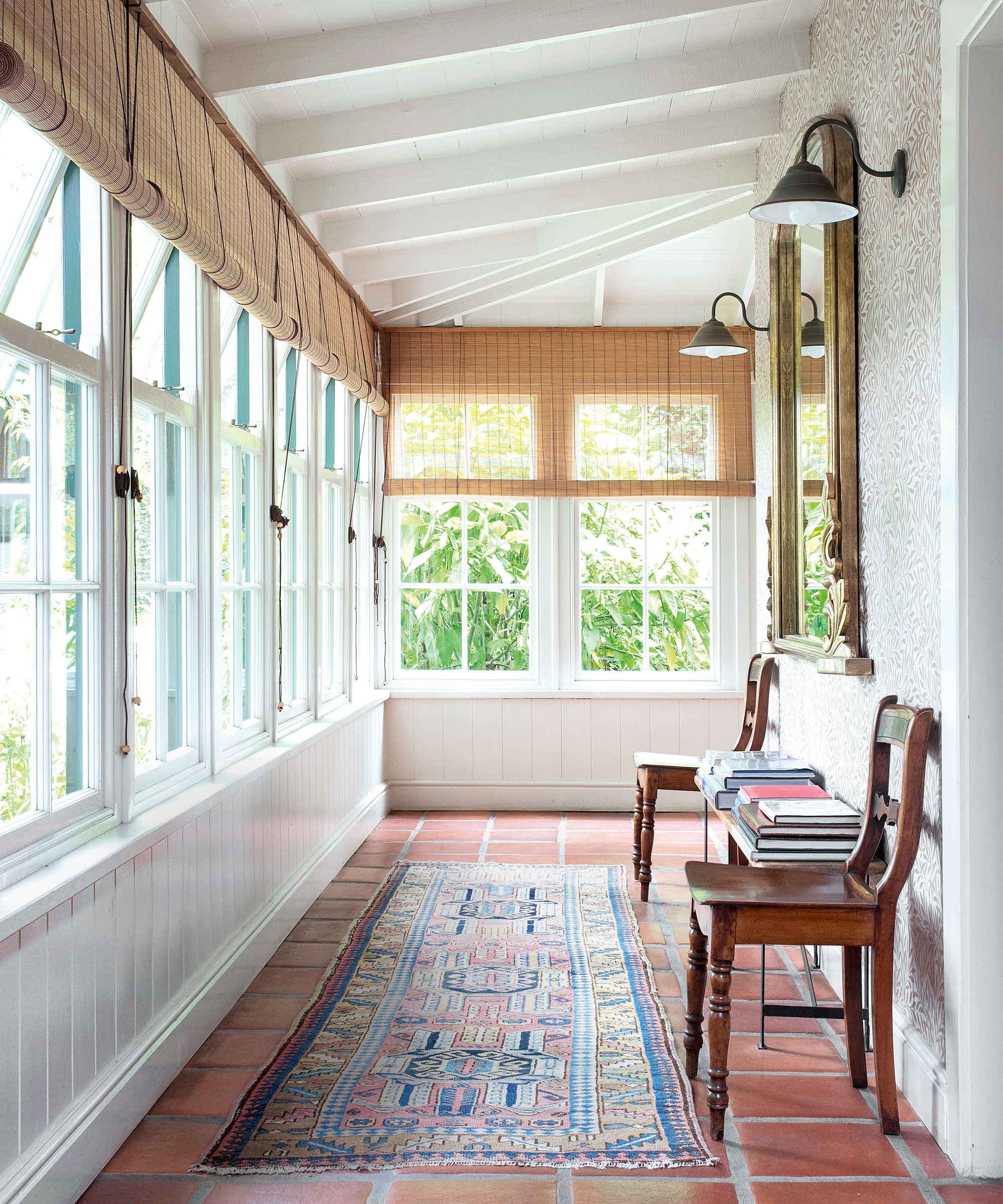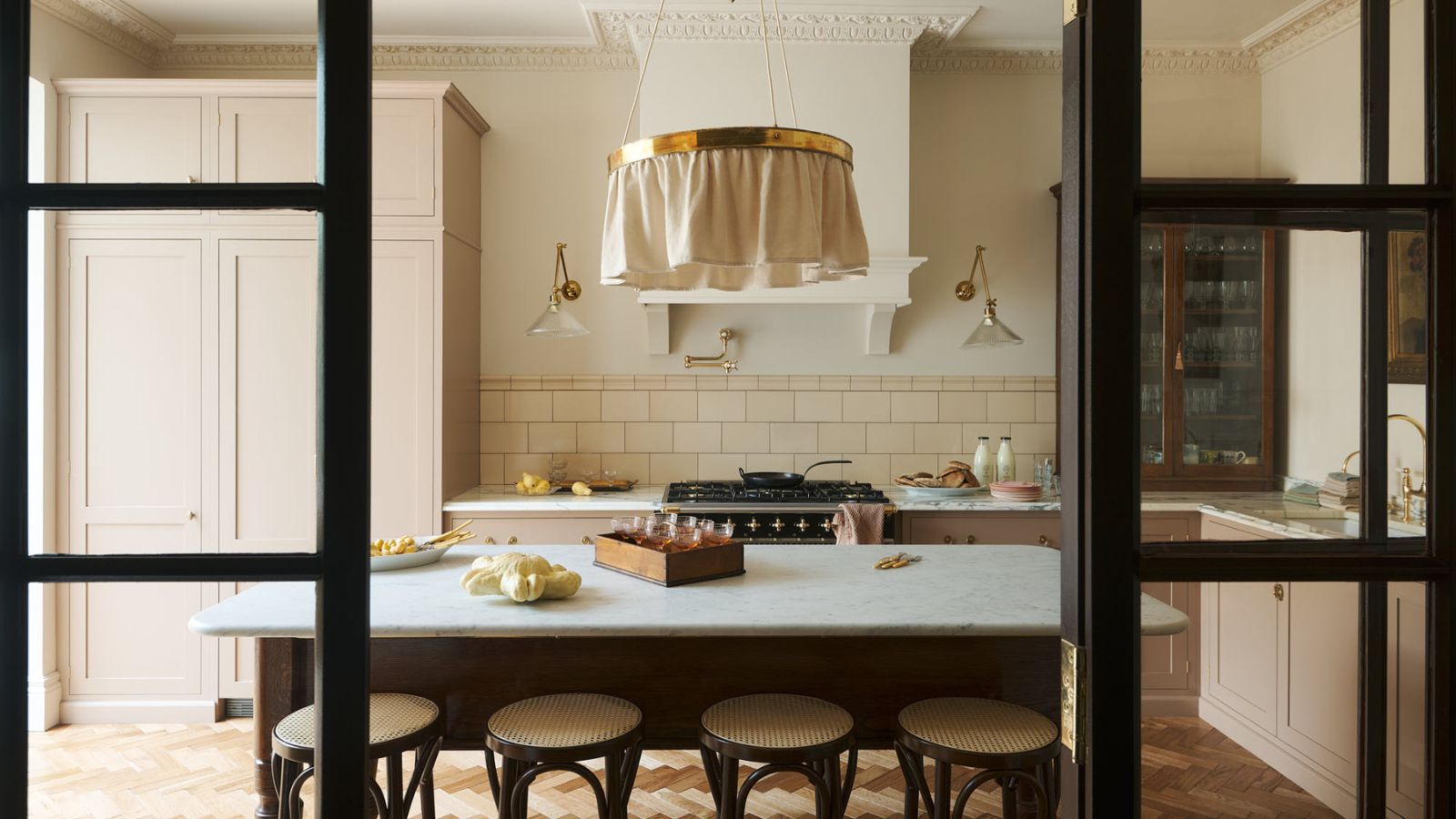How to repair floor tiles – fix cracks and refinish
Original floors are treasured features. Learn how to repair floor tiles to preserve their character

Knowing how to repair floor tiles the right way is vital if you want to restore this feature to its former glory, and avoid causing further damage.
Though one of the most treasured entryway floor ideas in older houses, tiled floors were also seen in other rooms, such as kitchens. Original designs are both practical and attractive.
Victorian hallway tiles can be particularly decorative – so if you are lucky enough to have a floor dating from this era, it is well worth preserving.
Created to imitate the floors found in medieval ecclesiastical buildings, the floors were often formed using plain geometric tiles of varying shapes, sizes and colors, mixed with patterned encaustic tiles decorated with inlaid colored clays.
In service areas, relatively inexpensive quarry tiles were widely used, and served a practical rather than aesthetic purpose.
Whether they are plain or decorative, make sure you understand how to repair floor tiles before approaching the job.
How to repair floor tiles
It's easy to learn how to clean encaustic floor tiles on a DIY basis. However, repairing floor tiles is a more specialist job, so for a cherished period floor, consider hiring an expert.
When deciding how to repair floor tiles, the first thing Dewi Brazier of artisan tile specialist D M Brazier & Co, does is to examine a floor for cracks and any subsidence.
‘With Victorian floors, the tiles are quite thick, closely packed together and laid into a layer of lime mortar with a base of clinker underneath,’ he says. ‘This is laid loose, so it settles and moves over the years, potentially causing damage to the tiles.’
Subsidence can be worse where the clinker or hardcore is laid between timber joists that may shrink or rot, such as in buildings with a basement, and repairs may need to be undertaken from below.
‘Sometimes you have to renew the boards between the joists that support the hardcore from underneath,’ explains Justin Dempster of Dempster Mosaic.
Many floors have been hidden beneath layers of linoleum or carpet so the tiles are smeared with adhesive and may also have surface staining from paint and dirt.
‘To take off glues and other marks, we use chemicals in conjunction with scrubbing pads (such as those used in the kitchen for non-stick pans). At the end of the job, a tiny bit of acid will remove any cementitious residue left from laying the tiles,’ explains Justin.
Once the main work to the floor is complete, it’s important to let it dry out fully. Salts may appear on the surface in the form of a white powder and should be brushed or vacuumed away.

How to fix cracked floor tiles
Damaged and cracked tiles are the most common problem with tiled floors. ‘We can replace them with new tiles cut to fit, but we try to consolidate rather than replace if possible,' says Justin.
'When refitting an original tile, we usually grind a tiny bit off the back to create room for the adhesive, rather than excavating and disrupting too much of the floor.'
Firmly fixed tiles with just a hairline crack are best left undisturbed to minimize damage to the floor, but often a tile has cracked because it’s loose so needs to be removed and relaid.
Dewi warns that the lime mortar base and the clinker underneath is quite friable and easily damaged. ‘We try to cause as little shock to the floor as we can, so we remove damaged tiles with a small wet saw and chisels,’ he says.
Justin advises lifting tiles individually by hand using tungsten-tipped chisels. ‘Where the subfloor is damaged, we excavate and reinstate with modern materials and shore up or consolidate the surrounding material before carefully replacing the tiles.’
Replacing floor tiles
In times gone by, a vast number of companies made tiles. This means there is an almost infinite range of colors and sizes, especially as dimensions varied hugely even within one batch due to temperature variations within the kiln. The tiles were also thicker than today.
Adrian Blundell of Craven Dunnill Jackfield, a company that manufactures traditional tiles, emphasizes the importance of achieving a good color match when introducing new tiles. ‘You don’t want pieces that stand out too much. We have standard colors but, quite often, we have to color match to the existing tiles.’
To replicate an encaustic tile, Craven Dunnill Jackfield needs a good, square-on photograph and the size of the existing tile. ‘We hand-carve molds and do color matches for the inlays and then produce the tiles.
'We’re quite happy to make one tile. They’re a standard price per piece with maybe the additional cost of color matching and the cost of the clay batch.’
When it comes to fixing the tiles, Dewi uses modern cement adhesives. ‘The grout would have originally been a lime mortar but now we use a modern grout, normally a medium gray color.’

How to finish the floor
When finishing tiles, the Victorians used a beeswax and turpentine mix. Dewi recommends a modern acrylic wax.
Justin suggests applying a stain-stop seal to prevent dirt from penetrating the tiles. ‘It leaves a natural finish to the tile but, if you want a slight sheen, which probably wouldn’t have been traditional, you can apply a satin finish.’ This is the easiest to maintain, although matte and gloss finishes are also available.
Should I replace old floor tiles?
It’s worth remembering that the cost of repairing a tiled floor may be no more than a good quality carpet; the floor is also likely to last a lot longer and will be far more in keeping with an older property.
Before thinking about all-out replacement, consider the patina of age and wear that exists with the floor. ‘You wouldn’t want necessarily to have a brand new floor if you’ve got a lovely old house. You want it with its quirkiness and the fact that it’s had a life; that’s part of its beauty,’ says Adrian.
There are exceptions, says Dewi. ‘If there’s subsidence and too many loose or cracked tiles, it may not be economically viable to renovate the floor, so it might be better to replace the whole thing.’
Sign up to the Homes & Gardens newsletter
Design expertise in your inbox – from inspiring decorating ideas and beautiful celebrity homes to practical gardening advice and shopping round-ups.
Roger Hunt is an award-winning writer and blogger specialising in sustainability, old houses, housebuilding and traditional and modern building materials and construction.
He is the co-author of New Design for Old Buildings from RIBA Publishing as well as the bestselling Old House Handbook and the companion volume Old House Eco Handbook, published in association with the Society for the Protection of Ancient Buildings (SPAB). He is also editor of the SPAB Briefings, a series which offers a summary of recent work by the Society with cutting-edge information to help both owners and building professionals. Titles include Energy Efficiency in Old Buildings, Windows & Doors, Lime and Disaster & Recovery. Roger's work has appeared in numerous publications including The Daily Telegraph, Period Living, House & Garden, Grand Designs, Homebuilding & Renovating, Real Homes and Listed Heritage. He also lectures regularly on retrofitting and repairing old buildings.
-
 Jeremiah Brent's new NYC-inspired rug collection has got to be the easiest way to bring his modern Manhattan style into your own home
Jeremiah Brent's new NYC-inspired rug collection has got to be the easiest way to bring his modern Manhattan style into your own homeJeremiah Brent has teamed up with Loloi Rugs to create a contemporary collection of home furnishings inspired by his city
By Eleanor Richardson
-
 I tried this one easy dishwasher trick and made the annoying need for manual drying a thing of the past
I tried this one easy dishwasher trick and made the annoying need for manual drying a thing of the pastIf you hate those little pools of water left on your cups and crockery, this towel trick is for you
By Punteha van Terheyden
-
 7 dorm room organizing rules for less clutter and more space
7 dorm room organizing rules for less clutter and more spaceExperts offer their top tips for creating a well-organized dorm room, no matter the size, space, or layout.
By Ashley Chalmers
-
 How to maximize storage in a small or shared dorm room, according to pro organizers
How to maximize storage in a small or shared dorm room, according to pro organizersFind out all the hidden storage zones you might never have noticed
By Ashley Chalmers